Graveyard Shift: A Tour Of Pulaski County Cemeteries
Reprinted from the Oct. 30, 1999 issue of EXPRESS
Karen Fritz, Author. Updated and Revised: October 2022

Halloween seemed an appropriate time to explore and write a story about some of Pulaski County’s more remote cemeteries. Promising an “afternoon of adventure”, I even managed to talk two of my teenagers and one of their friends (good sports that they are) into accompanying me on two separate outings to locate and photograph some of these pioneer cemeteries.
The photo shoot did, indeed, provide some adventure and surprise. But fun and Halloween atmosphere aside, the most profound discovery we made is that there is much fascinating and important local history to be learned in our counties.
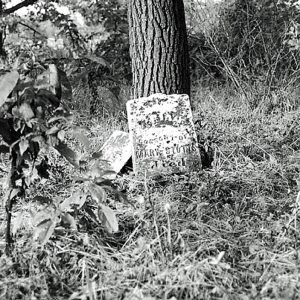
One cannot stand on a sunny hilltop or a shaded grove of trees in these cemeteries, gazing at tombstones that date back to the 1840s (many of them now unreadable), without being carried back in time.
Who were these people? How did they live? How have the surroundings changed since their friends and families stood grieving at these gravesites–carefully erecting markers which they hoped would carry their loved one’s memory into the centuries to come?
Pulaski County has 45 cemeteries, and for the most part they are well kept-even many of the old
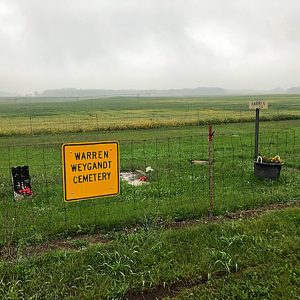
cemeteries which are no longer in use. That’s more than can be said for many Indiana counties.
Most people think cemeteries are forever. In Indiana, cemeteries are not forever. In times past, owners of land upon which an old cemetery stood, felt free to bulldoze the tombstones down and farm the land. That is no longer the case.
The Department of Natural Resources DNR has jurisdiction over every cemetery and burial ground in the state of Indiana. There are multiple state laws pertaining to the maintenance, protection, and use of cemeteries. Among them are: a person may not disturb the ground within 100 feet of a burial ground…; it is illegal to disturb the ground for the purpose of discovering or removing artifacts, burial
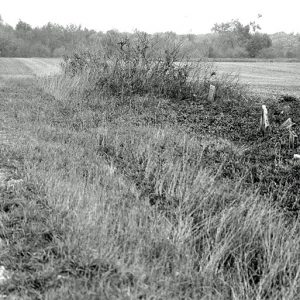
objects, grave markers or human remains…’ and makes it illegal to farm or conduct animal husbandry in a cemetery. For a complete list of Indiana Codes having to do with cemeteries see: DNR: Historical Preservation & Archaeology: Cemeteries. LINK
Earlier this year, the Terre Haute Tribune Star reported that “pioneer cemeteries are often abandoned, covered with brush and riddled with trees. County and township government officials say the problem with maintaining these historical sites is lack of money; or more often, these areas are on private property where officials can’t venture unless they meet a willing property owner.”
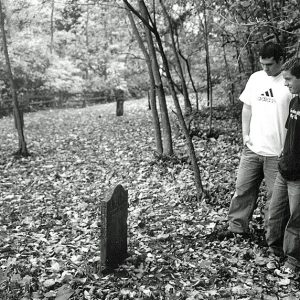
In 1997, a group called the Indiana Pioneer Cemeteries Restoration Project (INPCRP) was formed to bring more attention to Hoosier pioneer cemeteries. Among other activities, the organization has lobbied the Indiana General Assembly for laws to protect these graveyards. This organization’s informative website is HERE.
Pulaski County’s gravesites were documented and cataloged in the 1970s in a project undertaken by the Pulaski County Historical society, the County Genealogical society, DAR members and other interested volunteers. The goal was to transcribe the information found on each and every tombstone in the county. Histories of each cemetery were also part of the project.
This cemetery project was important for many reasons, not the least of which is that it records the deaths of many people buried in Pulaski County from the 1830s through the 1970s. Official county death records were not kept until 1882, and county
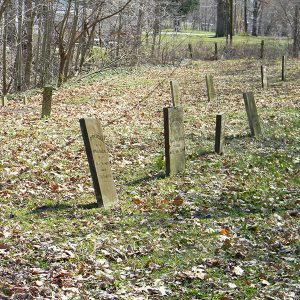
newspapers were not published regularly until the mid 1860’s and later across the county.
Even so, when the various society members and volunteers undertook the project, some tombstones were already unreadable. One graveyard southwest of Medaryville, the Stump Family burial plot, had already disappeared. Genealogical society member Zera Howe was able to document, through interviews and research, the five graves located in the plot. One was that of George Stump Sr. (1787-1863) who once was enlisted briefly in the Black Hawk War. Similarly, family farms were sometimes the location of early burials. No doubt there are more small family cemeteries, as well as individual graves whose locations are lost to history.
The Pulaski County Historical Society restored two pioneer cemeteries in the late 1980s, the Wasson Cemetery in Dead Man’s Hollow, and the Olive Branch Cemetery, both in Harrison Township. The Wasson cemetery was overgrown with briars, underbrush and trees when the society volunteers began the restoration, assisted by the local Boy Scouts. The last burial in this graveyard took place in 1876.
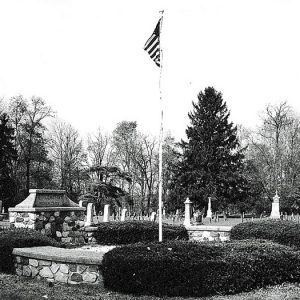
The most notable grave in Wasson cemetery is that of John Turner (1808 – 1848), about whom the legend of Dean Man’s Hollow originates. On May 3, 1848, Mr Turner was driving a team of horses from his home in Monroe county to the land office in LaPorte when the horses bolted and his wagon tipped over on him. Turner was taken to a nearby cabin where he later died. He was buried on a ridge above the Tippecanoe River near the location of the accident where a couple of graves were already located. Turner’s tombstone was erected some months later by a relative.
Pulaski County’s cemeteries listed by township:
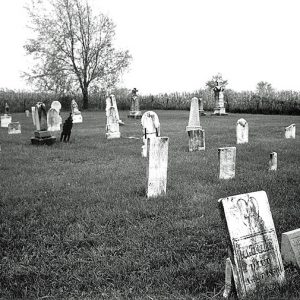
Beaver Township: Paul’s Chapel (New Dunkard Church of God), Tippecanoe Church (Newlight Christian), and St. James Salem United Church of Christ (St. James Lutheran Evangelical & Reformed).
Cass Township: St. John Evangelical Lutheran, Sutton (Pingle, Cass Civil Township), Wocknitz (Bethlehem or German Methodist), Goodway Baptist (First Love Baptist, Little Alva), and Noggle (on private property).
Franklin Township: Mt. Zion Quaker (Center or Bethel or Franklin Township Civil).
Harrison Township: Ward (Mooresburg), Sutton (Harrison Civil Township), Wasson (Dead Man’s Hollow), and Olive Branch Methodist (Warfield) Cemetery.
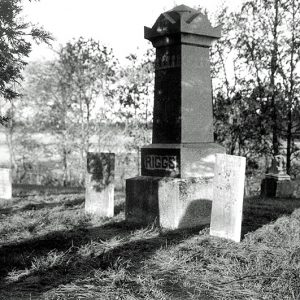
Indian Creek Townshiop: St. Joseph-West Catholic (Meyer), St. Joseph-South Catholic (Winter), Pulaski Presbyterian (Good’s Graveyard), Hoover Family (on private property), and ‘Pro’ (Indian Creek or Indian Creek Civil Township).
Jefferson Township: Burroughs Family (Malia), Koster (Pleasant Ridge), and Idle (Jefferson Township Civil).
Monroe Township: Winamac Town (with at least 8 additions), McKinley Memorial Gardens, St. Peter Catholic, Gross-Reed with Braun Addition (Hackett’s Burial Ground), and Stott’s Family (on private property).
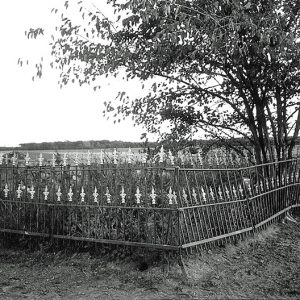
Rich Grove Township: St. Paul Evangelical Lutheran Church, and Denham (Rich Grove Civil Township), Huff’s Grove Burial Ground (location unknown).
Salem Township: Roseland (Ree’s Burial Ground, Francesville or Salem Township), and Nauvoo.
Tippecanoe Township: Old St. Anne Catholic, New St. Anne Catholic, Riverbank United Brethren (O K) Church, Riverside Memorial (I.O.O.F.), Monterey Town (Tippecanoe Township).
Van Buren Township: Buck, Star City West (I.O.O.F.), Mull Old School Presbyterian, Old Star City, Victor Chapel Methodist Episcopal (Anders/Andrews).
White Post Township: St. Henry Catholic, St. Mark Lutheran, Medaryville Town (Rose Hill), Bowman (St. John Evangelical Lutheran of White Post Township), Stump Family (no longer visible).